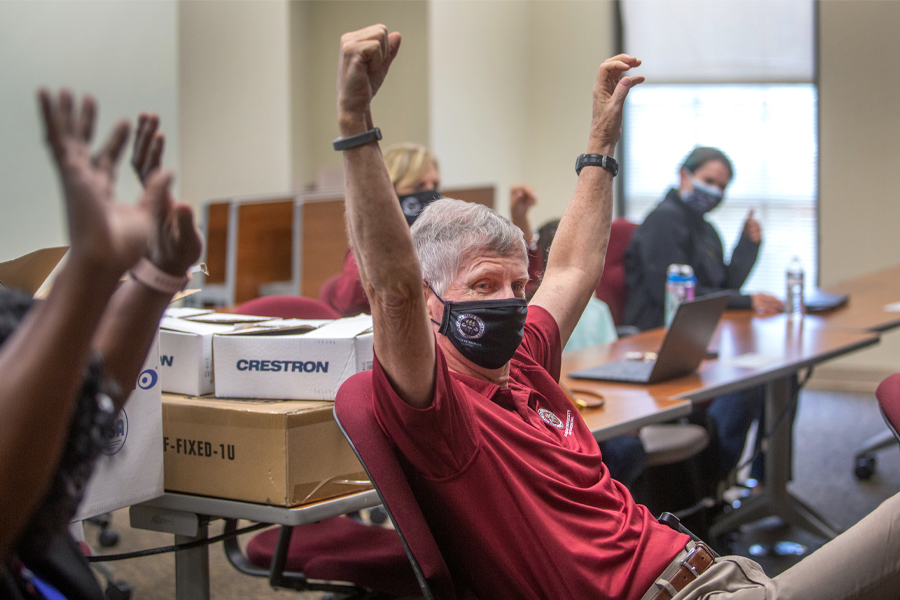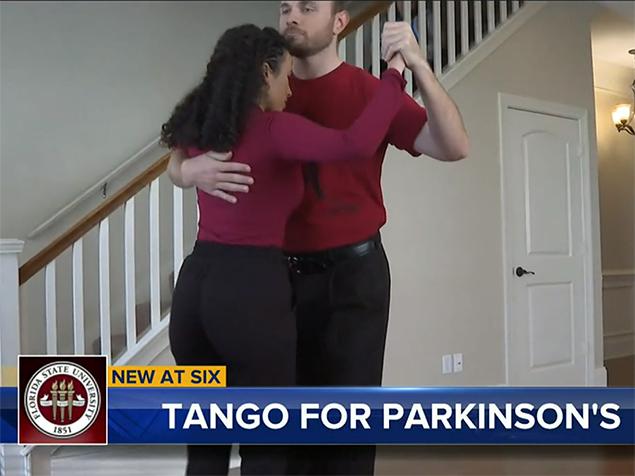FOR IMMEDIATE RELEASE
CONTACT:
Doug Gardner, Eastern Virginia Medical School
(757) 446-6073; gardneda@evms.edu
Bill Wellock, FSU University Communications
(850) 645-1504; wwellock@fsu.edu
@FSUResearch
March 2021
TALLAHASSEE, Fla. — Scientists peering into the beating heart have solved a decades-old, fundamental mystery about how the heart works. The revelation could herald the development of new treatments for heart diseases — the leading cause of death worldwide.
Researchers from Eastern Virginia Medical School, Florida State University and the University of Virginia have observed a tiny muscle filament during a crucial stage in a beating heart for the first time. The research was published in Proceedings of the National Academy of Sciences.
The heart is a unique muscle which contracts and relaxes about once every second in most people. Each heartbeat relies on cyclical interactions between thick and thin filaments in the heart muscle — a process orchestrated by rising and falling levels of calcium, said Vitold Galkin, associate professor of physiological sciences at Eastern Virginia Medical School and an author of the study.
During the “systolic” phase, calcium binds to thin filaments and allows interactions with thick filaments to produce the force required for heart muscle to contract.
“For decades the structure of the thin filament at this important point was unknown,” Galkin said. “This dramatically limited our understanding of the thin filament regulation by calcium.”
Researchers worked for two years to tackle the technical challenges presented by the complex structure of the thin filament and the difficulty in preparing the specimen for examination.
With those challenges overcome, the team used cryo-electron microscopy to directly observe the thin filament structure as the heart contracts and beats, findings that open up a new avenue for heart disease research.
“We can now fully understand how inherited diseases of the heart affect its capability to work,” said Jose R. Pinto, associate professor of biomedical sciences at Florida State University. “Basically, we created a new structural model for the cardiac thin filament, and based on that, we can now address several existing questions about the functioning of the heart in health and disease.”
The research team’s data reveal how parts of the thin filament cooperate to transition from the diastole phase of the heartbeat — when the heart muscle is relaxed — to systole, when the heart muscle contracts and pumps blood.
“The advance in our fundamental knowledge of cardiac muscle regulation paves the way to the rational design of tailored therapeutic interventions that could potentially improve cardiac muscle function in diseased hearts,” Galkin said.
The research was groundbreaking for several reasons, said co-investigator P. Bryant Chase, a professor of biological science at Florida State University. That includes the identification of individual structures along thin filaments at three concentrations of calcium — including a previously unknown structure at systolic calcium — and the use of thin filaments from a pig heart, which is very similar in size and heart rate to a human heart.
“Our results provide a new, fundamental basis for understanding and modeling the thin filament in health and disease because a number of genetic heart diseases affect proteins of the thin filament,” he said.
This research was funded by the National Heart, Lung, and Blood Institute.
The EVMS research team included Galkin; Cristina Risi, research scholar in physiological sciences; Ian Pepper, graduate student; Betty Belknap, research associate in physiological sciences; and Howard White, professor of Physiological Sciences. The FSU research team included Pinto, Chase and graduate student Maicon Landim-Vieira. The University of Virginia researcher was Kelly A. Dryden, associate professor of research, molecular physiology and biological physics.
###



